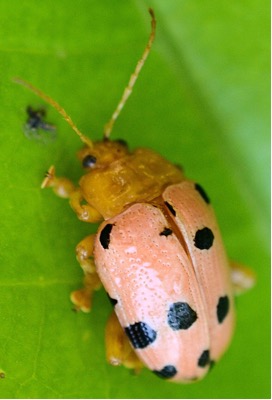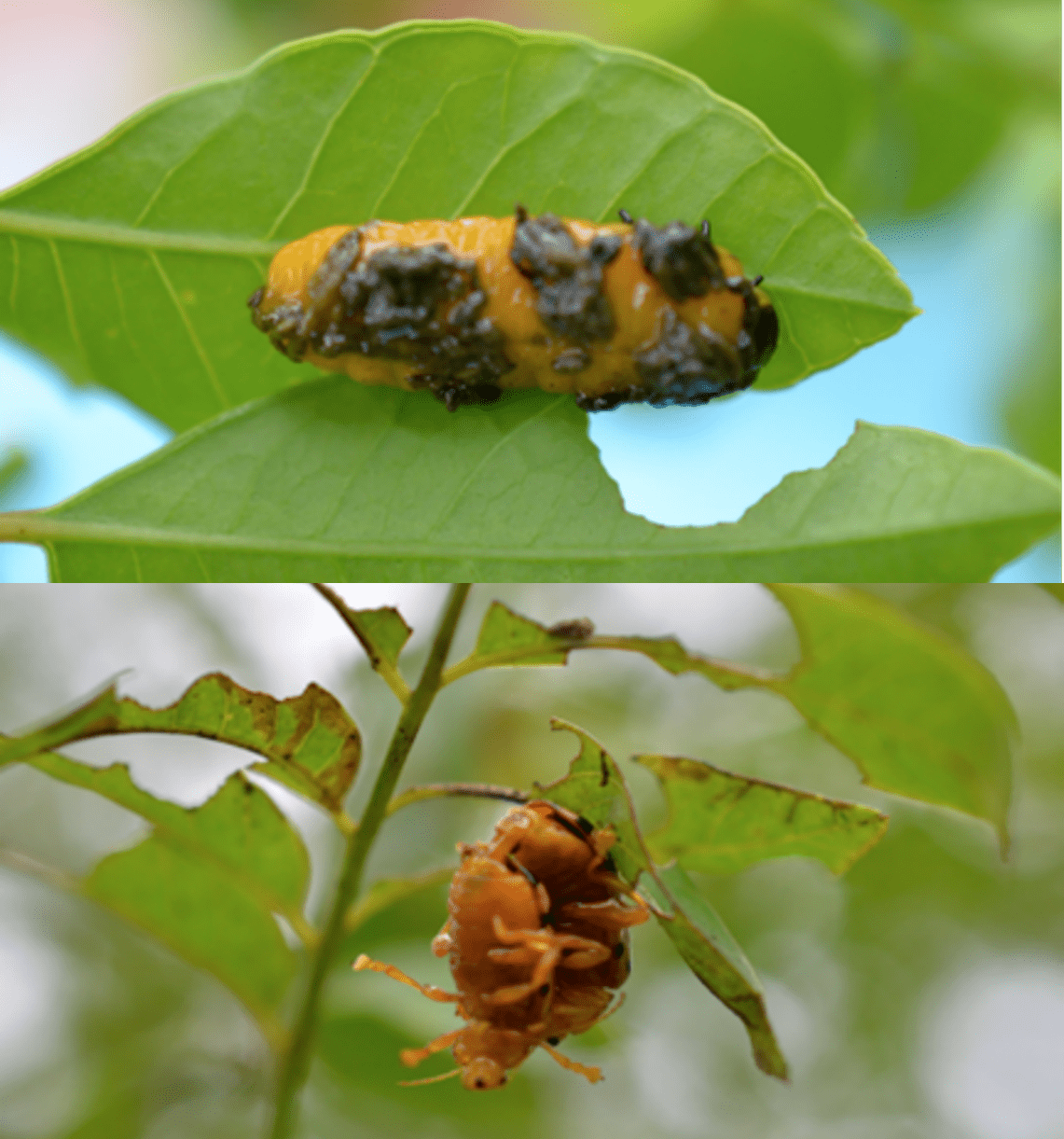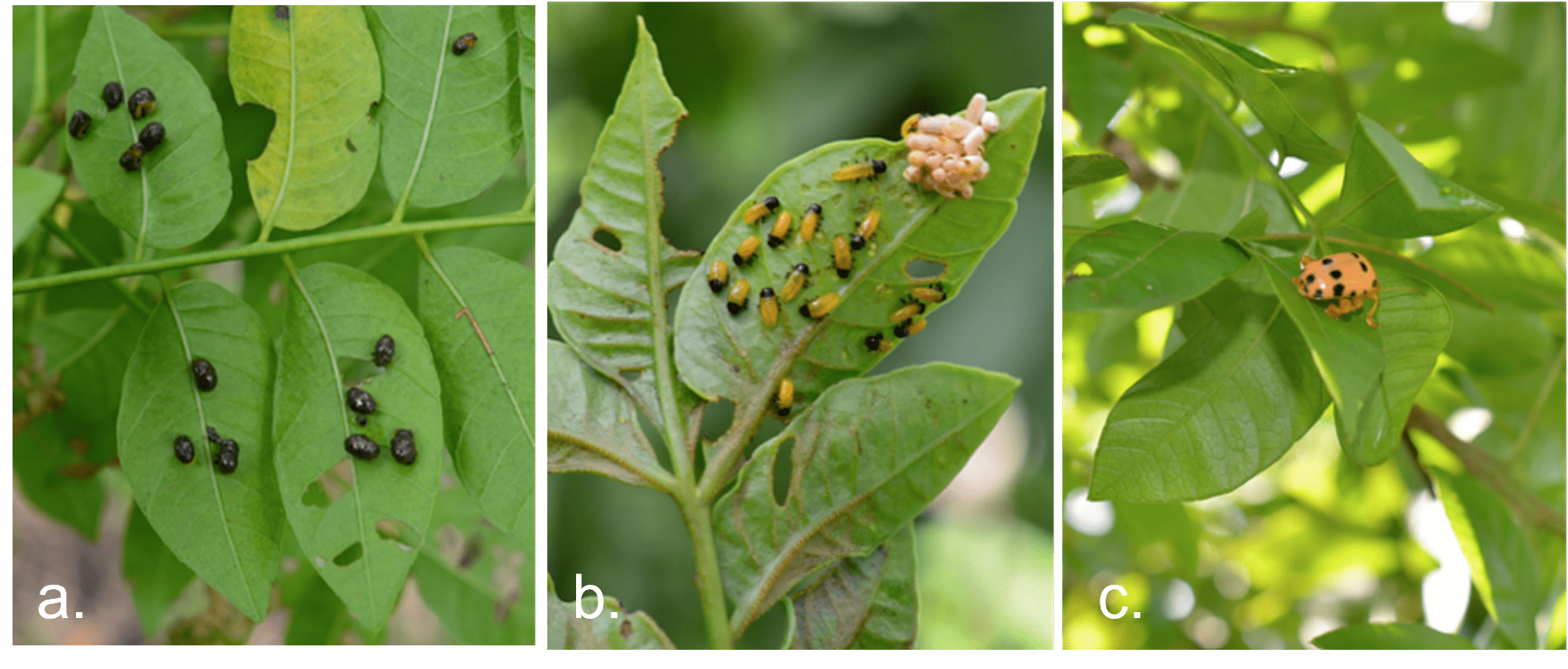
Strategies to control the sineguelas leaf beetle (SLB), an emerging pest of sineguelas in Batangas, are currently being developed through a project funded by the Philippine Council for Agriculture, Aquatic, and Natural Resources Research and Development of the Department of Science and Technology (DOST-PCAARRD).
The project, “Integrated Management of Sineguelas Leaf Beetle (Podontia quatuordecimpunctata L.) (Chrysomelidae: Alticinae) an Introduced and Emerging Pest of Sineguelas (Spondias purpurea Blanco) in Batangas,” is being implemented by the Department of Agriculture Regional Field Office No. IV-CALABARZON (DA-RFO-IVA). It aims to study the distribution of SLB, discover its natural enemies, and develop control strategies for its sustainable management.
Batangas is the largest sineguelas-producing province in the country, followed by Iloilo. Through the project, the geographic distribution of SLB and the extent of its infestation in the country were determined. According to the project leader, Dr. Orlando A. Calcetas of the DA-RFO-IVA, the pest is present in Batangas, Laguna, and Rizal. Previous observations showed that the pest was also present in Central Luzon, Occidental Mindoro, Aklan, Misamis Oriental, and Bukidnon.
 Weekly pest population incidence monitoring of egg, larva, and adults of SLB in San Miguel and Sto. Niño, Batangas City revealed that their occurrences in both areas are almost the same.
Weekly pest population incidence monitoring of egg, larva, and adults of SLB in San Miguel and Sto. Niño, Batangas City revealed that their occurrences in both areas are almost the same.
Preliminary data showed that feeding and oviposition preference, as well as leaf age and maturity are important factors in SLB spatio-temporal distribution. Data showed that egg deposits are more abundant on old trees compared with those on young trees. There were also more larvae feeding on the inner canopy while more adults were feeding on the outer canopy of the sineguelas tree. Moreover, data on feeding damage severity suggests that SLB prefers to feed on young shoots and on mature and tender leaves.
Dr. Calcetas' team is studying potential natural enemies of SLB and they have discovered that the pentatomid bug (Eocanthecona furcellata Wolff) is a potential biological control agent for the larva of SLB. Likewise, the white muscardine fungus (Beauveria bassiana), which is considered a candidate entomopathogen, was found to infest the pupa and adult SLB.

These accomplishments were presented during the annual project review conducted by DOST-PCAARRD via videoconferencing. The virtual activity served as a platform for the project team to assess the project’s status of implementation, discuss concerns, and recommend possible actions and solutions, present the succeeding year’s workplan of implementation, and identify R&D gaps for future initiatives.
The review was attended by project team members from DA-RFO-IVA, S&T Consultant Candida B. Adalla, DOST-PCAARRD’s Deputy Executive Director for R&D Feliciano G. Calora, Jr., Program Management and Evaluation Head Renelle C. Yebron, Project-based Information System (PME-PBIS) Section Staff and other key representatives from the Crops Research Division (CRD).
